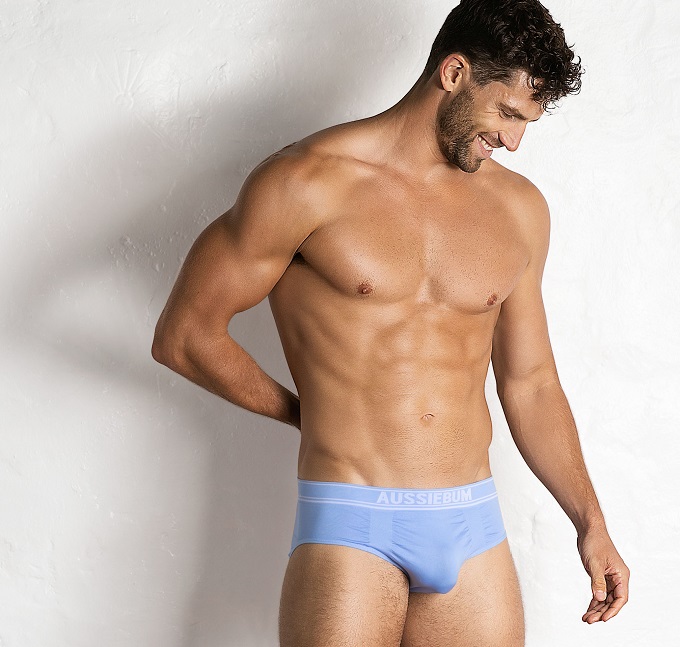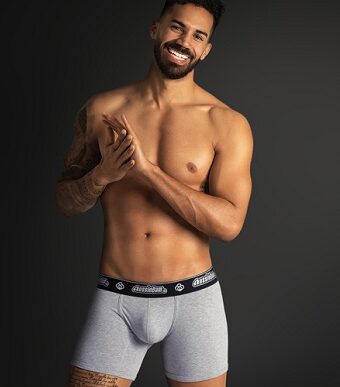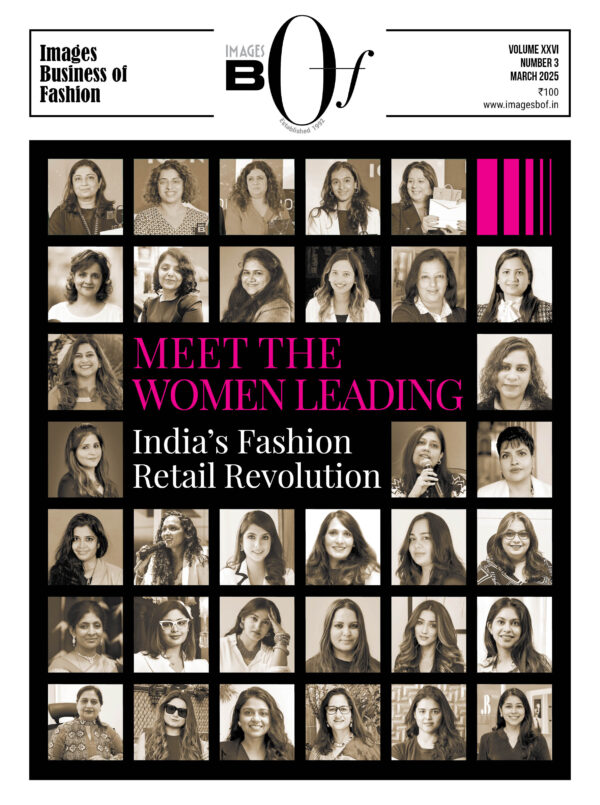Marketing head-turned-herbalist-turned-fitness trainer-turned-retailer – that is how impressive Sean Ashby’s resume is. The Founder & CEO, aussieBum – an Australian beach wear brand.
Ashby’s concept underwear was initially rejected by Australian retailers. Despite that, he ploughed on and today, aussieBum has grown from a modest dining table project in Drummoyne to a globally triumphant success story. Today the company manufactures over 1 million underwear and swimwear garments, along with fresh lifestyle apparel lines. Each and every aussieBum garment is still designed by Ashby.
It is with a certain degree of irony that many of those Australian retailers are now proudly stocking the homegrown brand following the seal of approval from overseas.
Surabhi Khosla, Editor, IMAGES Business of Fashion met Sean Ashby on the sidelines of the India Fashion Forum held in Bengaluru in February 2024 and walked her through his brand’s journey and his plans for India.
Excerpts from the freewheeling chat…
How was aussieBum born?
I used to head marketing for Warner Music in Australia, but then decided to study medicine and became an herbalist. Soon after I realized that people wanted a therapist more than a herbalist so I switched lines and decided to focus on my fitness. It was at this time that I was on the beach a lot and I suddenly realized that the swimwear I was wearing – classic nylon, which was very iconic to Australia – was going out of production and I couldn’t buy it anymore. I decided that I’m going to make this and I did.
I was turned down a lot when I attempted to pitch this to retailers in Australia, but at that time, the dot com boom had come about and so I decided that if a retailer won’t sell it, I’ll build my own website and sell it to the world myself. That’s how aussieBum happened in 2001. The name comes from the fact that I am an Australian and a total beach bum.
I sent samples out to major stores of the world and it caught the eye of David Walker Smith, then head of menswear at Selfridges. That got the ball rolling and all major departmental stores started reaching out to me for my product. Before I knew it US, Europe, UK, South Korea and Taiwan had become my biggest markets.
Tell us about some innovations that prompted bigger brands and department stores to sit up and take notice of your products.
Well, one day I was sitting and thinking – if there can be a female Wonderbra, why can’t a man have the wonder jock? I decided to invent one and the internet blew up in New Zealand because of the number of orders that came in.
How do you build sustainability into your brand?
I am very dedicated to and invested in using natural fibres like bamboo. My company had developed underwear made from bamboo fibre some 10-15 years ago, a fibre which is now being widely recognized and in demand.
Aside from this, we also turn leaves into yarn, for example, banana-infused fabric. Then there is merino wool of course, and I also was the first to introduce vitamin-infused underwear, which was a resin that was infused into the yarn. This underwear is great for your skin and lasts for about 20 washes. It was so unique that it actually made the front page of the New York Post.
Gold Standard Marketing Move by aussieBum
- Sean Ashby created a 24k gold underwear, which actually sold 875 pieces after it was displayed at Selfridges.
- At that time, Selfridges wanted to do something different from Harrods because they were both locked in an intense competition and Harrods had displayed the most expensive female bra.
- Selfridges hit back with the 24k gold underwear.
- The underwear became so famous for its sheer innovativeness that it was featured on TV and radio shows proving that men’s casualwear and athleisure products can be as dynamic as any other apparel out there.
How did you decide to explore India as a potential market?

I met an investor who wanted to buy my company with the backing of an Indian family settled in Singapore. They informed me that they did some ground research and observed that amongst other Australian brands, Indians found aussieBum very appealing – one of the main reasons for this is Australia being a very popular holiday destination and home to a lot of Indian-origin families. It was then that it struck me that I had never even thought of India as a potential market.
Armed with research, I decided to go on my first mission to India – Mumbai and Chennai to be specific. The rest, as they say is history and today, India is in our top ten markets and we are developing specific product ranges for the Indian market. Also, India generates the third-largest traffic on our website, which is phenomenal.
So, how difficult is it for a brand to come into a country like India? Are there a lot of hoops that you had to jump through before you entered the country?
There are a lot of logistics required to entering a country like India especially since the Government is still introducing laws and rules as they have become the second biggest economy to the world. Since my business model will be B2B and also B2C, I had to register for a PAN. It has taken me six months to get to the stage I am today, but the results are very satisfactory.
How do you plan on handling manufacturing with respect to India?
My overall objective is to take my manufacturing units from China where our products are currently made, to India where I believe that we can have the same quality of products. Moreover, because of the audience and the growing awareness of my brand, I would like to make our products in India and then provide it into the market here and use it as a manufacturing hub for my products across the world as well.
Who is your target audience in India?
The Indian male – specifically, the second generation of the Indian male who doesn’t want to wear what their fathers wore and want more innovative products. They want to find their own label and find their own tribe and not wear what everyone else is wearing.
What are the price points that you’re offering here?
In India, for now, we are a strictly online brand, but our prices are competitive – $5 to $9 for one product.
I understand in India the returns rate on pay on delivery is considerably high and a lot of people find it a challenge. I don’t. My brand, we have a return rate of 2% to 3%. But, I don’t want to keep and re-sell products that are returned. I want to give back to the community I’m working with – re-gift them or distribute them to charities because at the end of the day, everything is not about profit. This is also because I believe that as a brand, we are not going to affect other brands. We are just here to increase and broaden India’s connection with the rest of the world.
Tell us about the technologies that you’re using.
 The first and most elementary of things is that I come to India every month to understand the culture, the values and likes and dislikes of the people here. I then use technology to design products just for them. So when someone from India uses my website, while they can see the collection designed for the whole world, they can also see specifically what will work for them, what has been specially designed for them.
The first and most elementary of things is that I come to India every month to understand the culture, the values and likes and dislikes of the people here. I then use technology to design products just for them. So when someone from India uses my website, while they can see the collection designed for the whole world, they can also see specifically what will work for them, what has been specially designed for them.
I am an absolute lover of technology and evolution AI. We use apps and dashboards to collect customer data. We know what’s trending, we know what’s emerging, we also know what everyone’s talking about. We engage with customers on social media and allow them to dictate what they want next.
What are the top three technologies for Sean Ashby for India?
AI, power apps, picture profiles. A picture profile is like a ‘how well do you know your customer?’ Do you know their habits, what they like to wear, how they behave, what are their aspirations? I want to know everything about my customer so that my product helps them present themselves the way they want to.
What about supply chain? Are you tying up with companies to help you with post purchase operations in India specifically?
Back home, I have a brilliant supply chain in place and we used to ship to India within 5 days – which is a great turnover time. For now, I am talking with Delhivery to deliver our products in India.
Any specific marketing strategy for India?
Excitement, entertainment. To be able to show a dream, a dream of you just took me away from my worries and you made me want to click!
Hypothetically, if you were to open a store in India, which city would you open a store in?
I have my heat maps. I know where my audience is, but I am still learning about the market. I know the obvious market choices for a store, but I am still exploring.
Do you plan to introduce any other adjacent categories? Anything for women?
I want to be selfish, and I want men to have something that’s just theirs. Also, fashion is limited for men in many different ways in comparison to women’s fashion.
I know what I know, but with the female market, I just feel that other people can do it so much better. Introducing women’s fashion for me is just cheap profiteering, trying to piggyback off innovation and ideas of females who know what they want, what they want to wear, and how they want to look. I don’t want to do that.
Where do you see yourself financially in the next two years? In India and in general, for aussieBum.
The company has always traded 20% and above. Turnover, to me, is relative to the market conditions. aussieBum is a $20 million plus turnover company already. In the future I’m expecting, especially in the men’s category of underwear, a minimum of 15% to 20% growth-on-growth every year. This growth is going to be driven by innovation.



